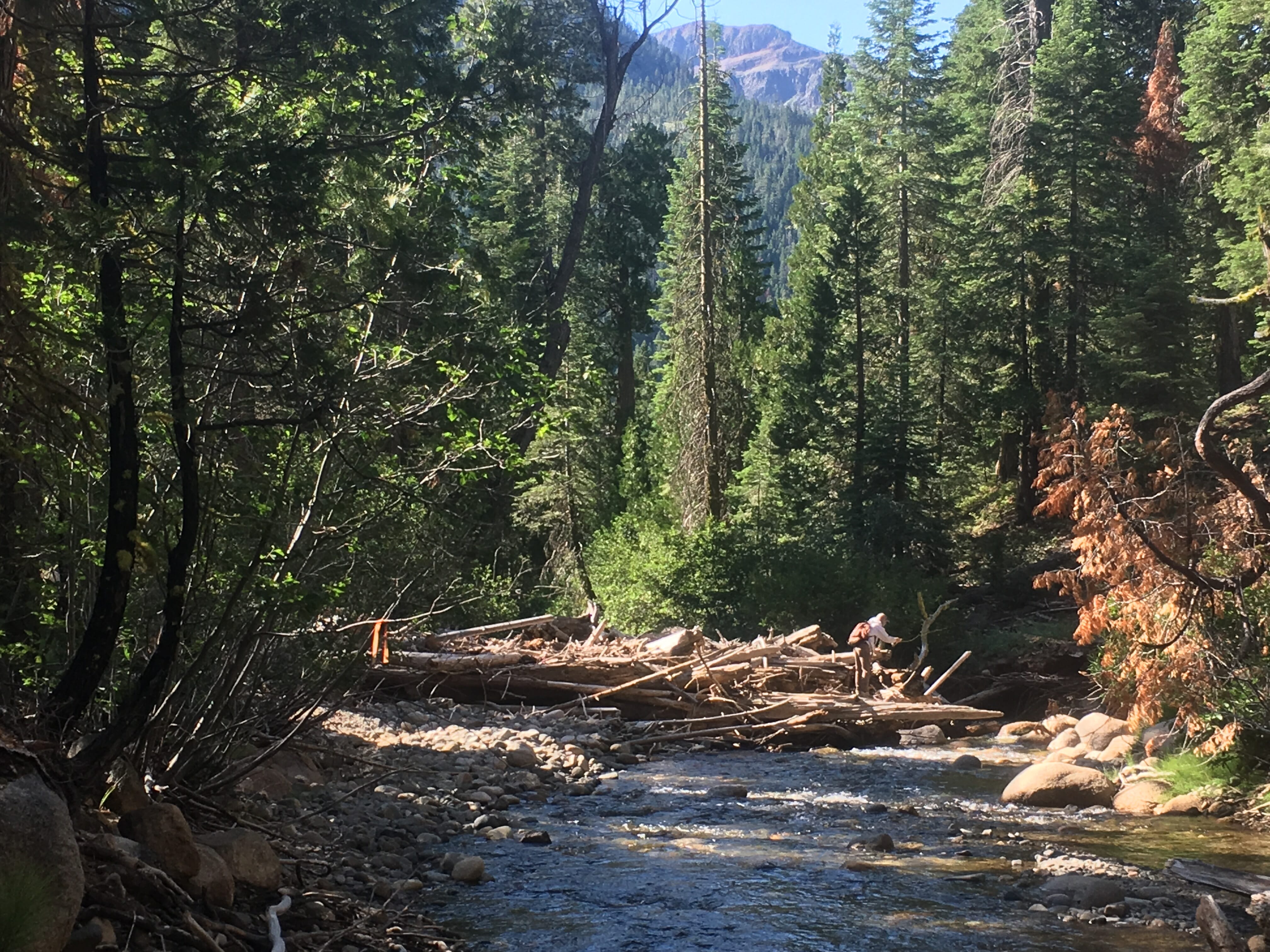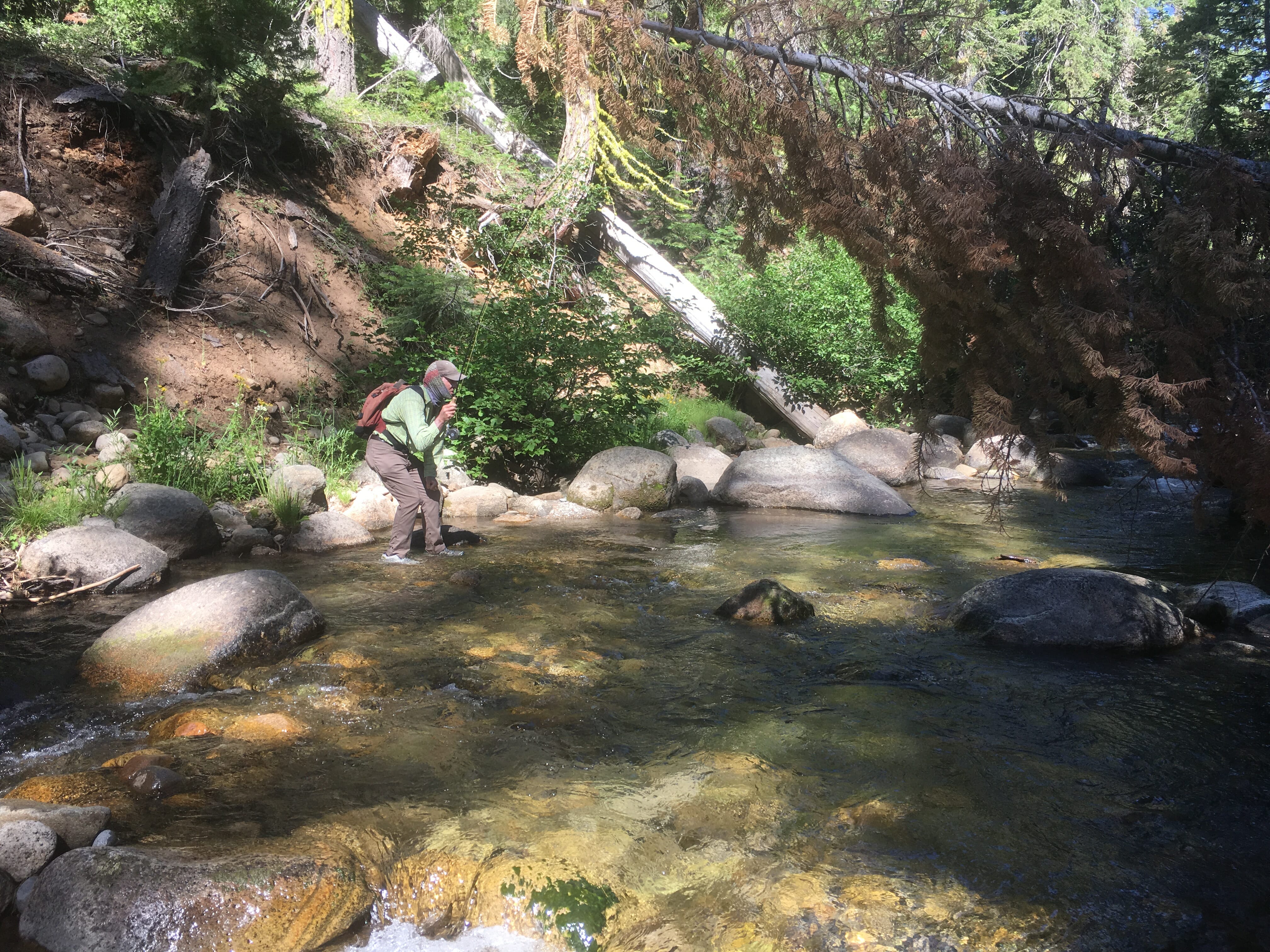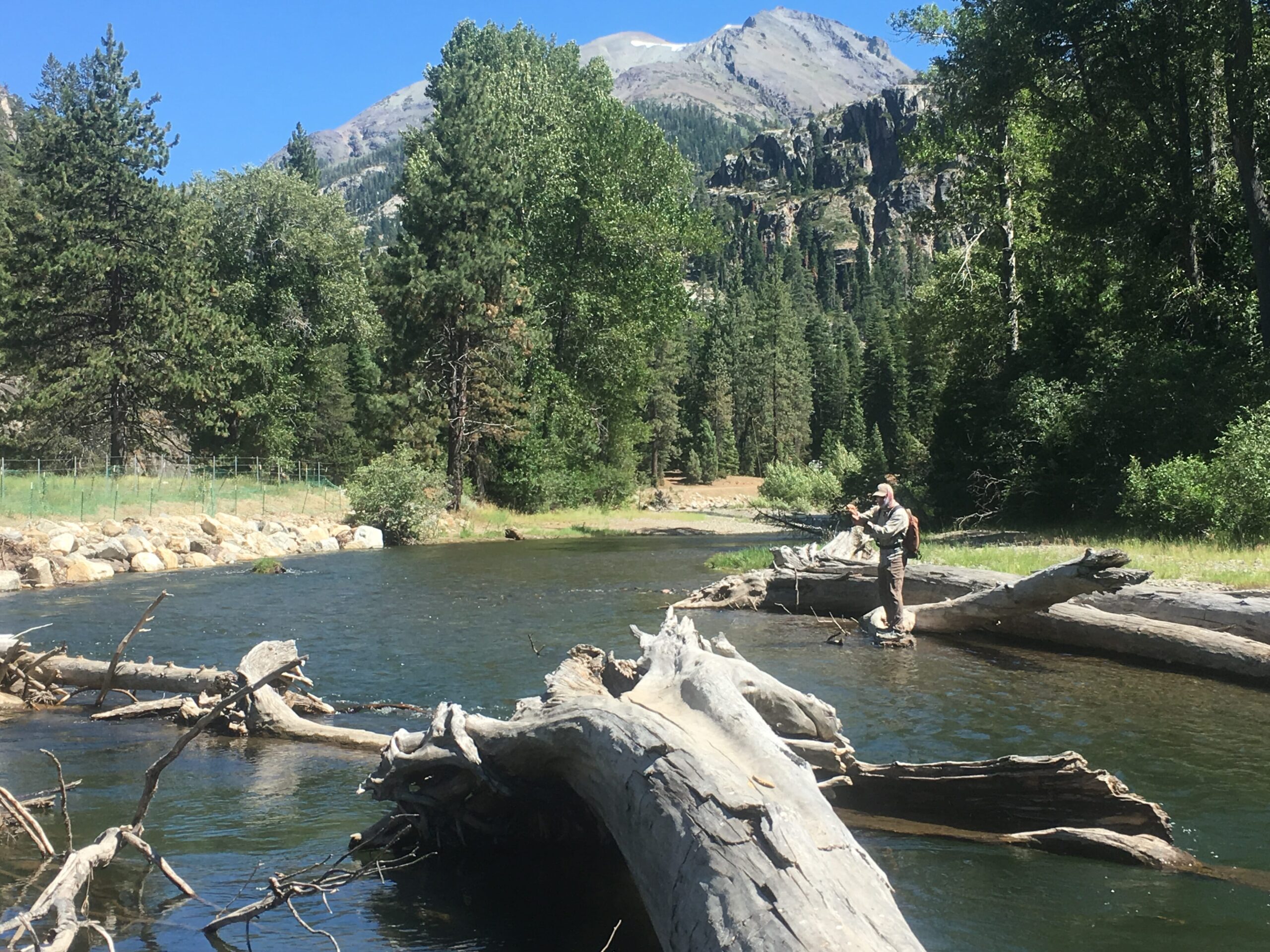Creekin’ on public lands in the central Sierra.
By Sam Davidson
You might imagine that fishing adventures prompted by a report from a guy you didn’t know, who wandered over to your campsite the night before, having seen you and your brother trudge back in to the campground as the last light drained from the sky with no trout in your possession, and who proceeded with much froth and gesticulation to rant about large wild trout in plunge pools in a small tributary creek a short distance away, would not end as advertised.
You would be right.
My brother and I have both been fishing long enough to know better. But our usually reliable streams in the Stanislaus National Forest below Sonora Pass had been surprisingly unproductive that day. So what the heck. We drank the Kool-Ade and decided to check out some new water.
The next morning we found the creek and parking spot, exactly as described. It was cool and still under the fragrant trees, mostly red firs and ponderosa pines. I tied on a midge pattern while my brother opted for a small orange Stimulator. We decided to keep to the east side of the creek, and began our approach.

Working one of the log jams.
It was easy hiking, for the most part, through the soft loam of the forest. Footpaths or game trails would appear and disappear randomly. We passed two old fire rings.
The guy in the campground had told us he hiked upstream no more than a mile to find the hefty “natives” in this water. We walked for maybe ten minutes before we couldn’t stand the suspense any longer and made our way down to the creek.
For me, small backcountry creeks with wild trout in them are the sine qua non of fly fishing. This stream immediately caught our fancy. It was exquisite in every way.
Sunlight cascaded over the slope above us and filtered through the trees, illuminating patches of water and blushing the golden orbs of granite over which it flowed. Shrubs and small trees provided intermittent shade. It still had good flow, despite the recent mid-summer heat, and the varied structure to make any angler’s pulse quicken.
A logjam promised some deeper water. My brother and I stealthily took up positions at either end of it.

My brother setting on one of the perfect wild trout in this creek.
I made three short flip-casts before a trout rose to the midge. It was perhaps six inches in length, but feisty enough to put a decent bend in my 3-wt. As I gently unhooked it in the water at my feet, I marveled at the explosion of colors on its flanks.
My brother and I have been fishing together since we were kids, and while we are always genuinely happy for the other’s success with rod and reel, there is always too a wisp of competition. I have better gear and more hours on the water but am still never that surprised when my brother lands the biggest fish of the day—which he did, multiple times on this creek, starting with a perfect 9-inch rainbow from the downstream end of that log jam.
Over the next several hours we made our way upstream, clambering over the occasional boulders and logs to dap our flies in water so clear you could see every detail of the creekbed in four feet of depth. In every place where you imagined a trout would hold, small wild rainbows slashed and rolled on our flies. On the other hand, imprecise casts and over-exuberant sets put our flies in the trees. Wet wading kept us cool as the sun and air temperature climbed.

For as far as we hiked, we never found the truck-sized boulders and their plunge pools nor the 14-15 inch “natives” promised by the guy in the campground. But it didn’t matter. We found trout, they were glorious in their decoration and vigor, and we successfully stalked and cast to them.
My brother, as is often the case, caught more and bigger fish, but he politely declined to crow about it much. There was really no excuse for me not to concede that it had been a perfect day of fishing.
But here’s the thing. Places like this aren’t that common, and they are under duress. Sure, across the country there are many thousands of small streams flowing from and through the montane and alpine zones on public lands, but many of those streams don’t have trout in them, and many others are drying up or becoming less salubrious for trout as the climate warms, drought becomes a more constant companion, regulations that protect water quality get rolled back and resource development pressures intensify.
In this country, public lands provide most of the last, best fishing and hunting grounds accessible to anyone, requiring little cost of entry and a little exercise. For sportsmen, good habitat means everything. We have to better protect what’s left.

Sam Davidson is communications director for Trout Unlimited’s California and Oregon programs. He is an unabashed admirer of small, wild trout.



